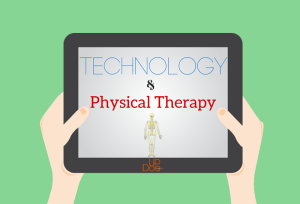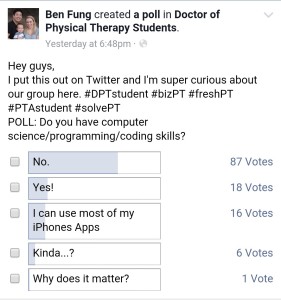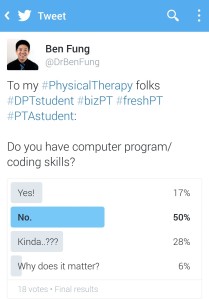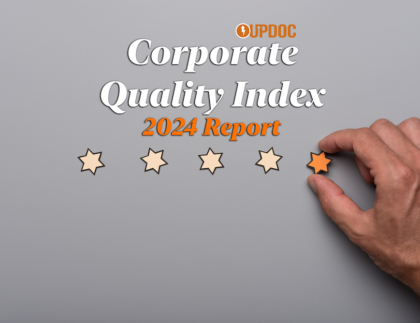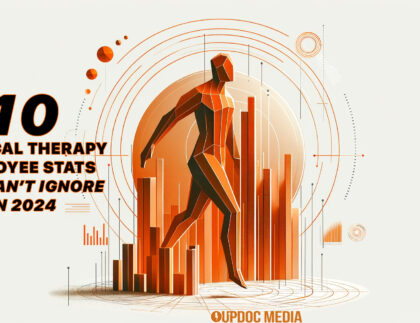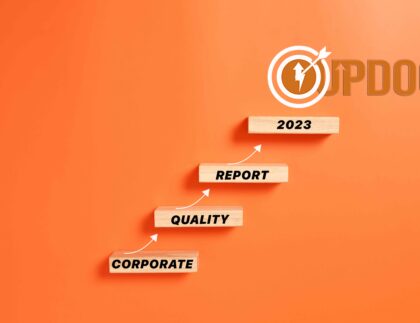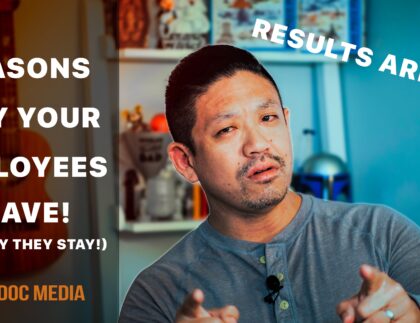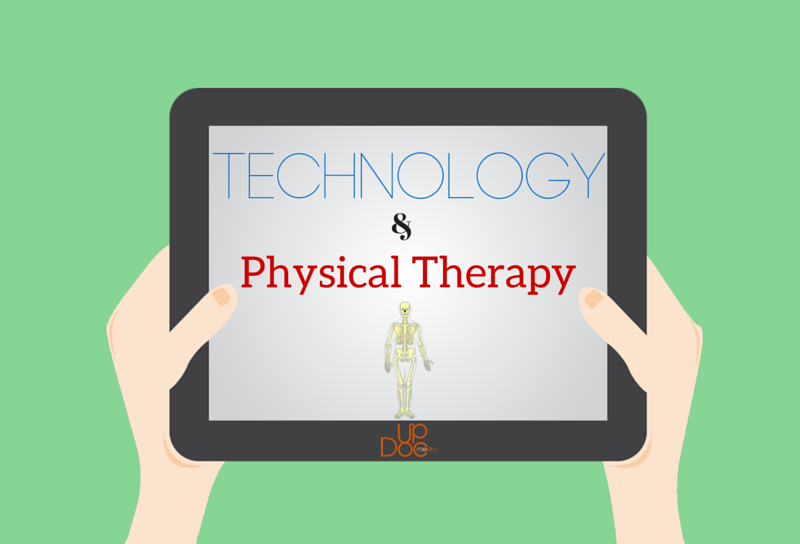
Let me ask you a question: If said that there exists technology to predict and prevent musculoskeletal disease and injury, would you be interested?
So, last week, I put out a poll on Facebook and Twitter to find out how the representation within the Physical Therapy community as it pertains to skill sets in computer science, programming, coding, etc., because of the trends in healthcare being heavily focused on two aspects: tech integration and patient engagement. The results are below as are my thoughts on how we should be integrating technology and physical therapy.
For those of you who don’t know, before my PT life, I was actually a Bioengineer. Funny enough, I actually know 4 or 5 PTs who have this in common. Having tried the life of an engineer and needing more human contact, we turned to pursue the life of a physical therapist. However, I think things are quickly coming full circle.
PS. This post is a prequel to a healthcare disruption post I’ve been working on.
As we’ve been observing, the future of healthcare is likely to heavily involve population management, smart data, a lot of coding & database management, and plenty of engineering skills. While I’ve been on my soap box about physical therapy and business, I think that we need to just as if not more aggressively, pursue integration of technology into physical therapy didactics AND practice.
Consider this: Wearables such as FitBit, Mobile Tech, Patient Portals, Data Management, Population Management, Human Capital Controls, and even Implantables… how many of these terms are mentioned in PT school? Moreover, how many of these terms are popularly discussed within PT circles? And, how many PTs are practicing in this space at all?
These are the areas where healthcare movers and shakers are trending towards; directions which we are quickly being left behind as a profession.
Consider this survey of ~150 social media participants. First on Facebook:
Then on Twitter:
So, out of just under 150 participants, almost TWO THIRDS of those who identify within the PT community DO NOT have technical computer science skills. Fortunately, nearly 15% do! And, for what it is worth, we apparently represent a good amount of Apple users 😉
But, what is this really about?
All those tech companies dominating wearables, big data, and other fitness concerns… WE should be dominating that space! However, we’re completely obsessed with the treatment table, the four walls of our clinic, and what we specialize in that we box ourselves into such a small space… DESPITE the immensity of value we could otherwise offer in other sectors, segments, and areas of focus.
So, what is the point of this post about technology and physical therapy?
The REST of healthcare has already quickly shifted to integrating, innovating, and identifying prime targets of opportunity within the industry as it pertains to technology.
It is far past due time for physical therapists to do the same.
All those objective measures, all those outcome measures, all that data, all those scores, all the clinical prediction rules and practice guidelines… how about infusing them into our participation in population health, disease prevention, and patient portal engagement? What about learning skills and familiarizing ourselves with the tools out there — gradually infusing them into our practice now, rather than playing catch up when it is too late?
For those of us already familiar with computer science, database management, programming, etc. I think we need to go ahead and start paving the way. For those of us who have no clue at all; probably because we’ve been taught to primarily esteem the clinical setting, it’s time to open our minds, get curious, and get excited! And, for those of us in leadership positions and posts of influence who can start creating waves of change — it is certainly time to do so.
Physical Therapy and Technology
Imagine the opportunity! Imagine the ability to capture musculoskeletal data, movement data, physical activity, HRR, gait velocity & deviations, etc… and, being able to intervene before things go “bad.”
Imagine being able to tease out lifestyle contributing factors, so easily missed during the meager moments we spend with our patients.
Imagine taking Physical Therapy to the next level; into the next paradigm!
The time was yesterday. But, better late than never! We need to get on it, NOW!
